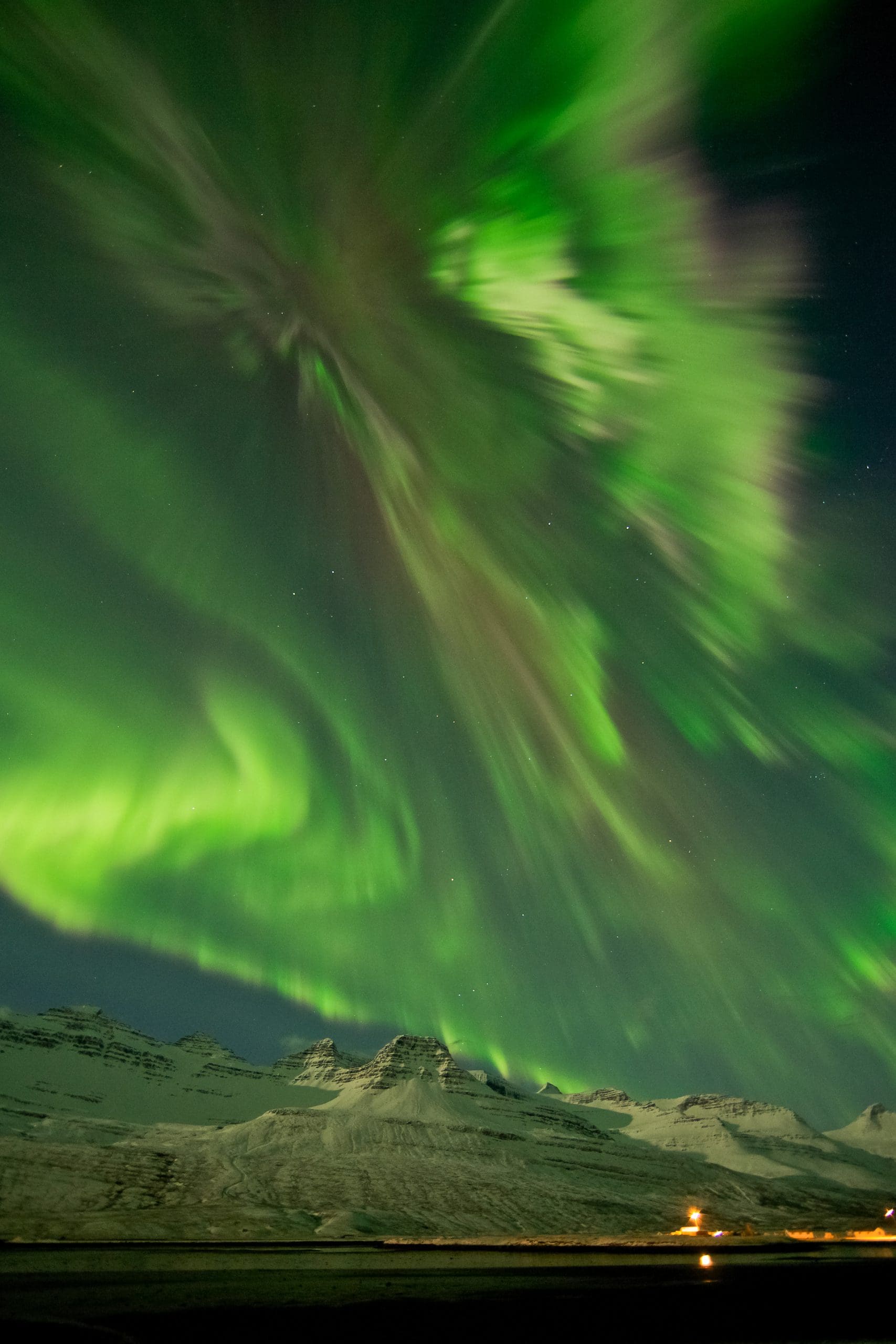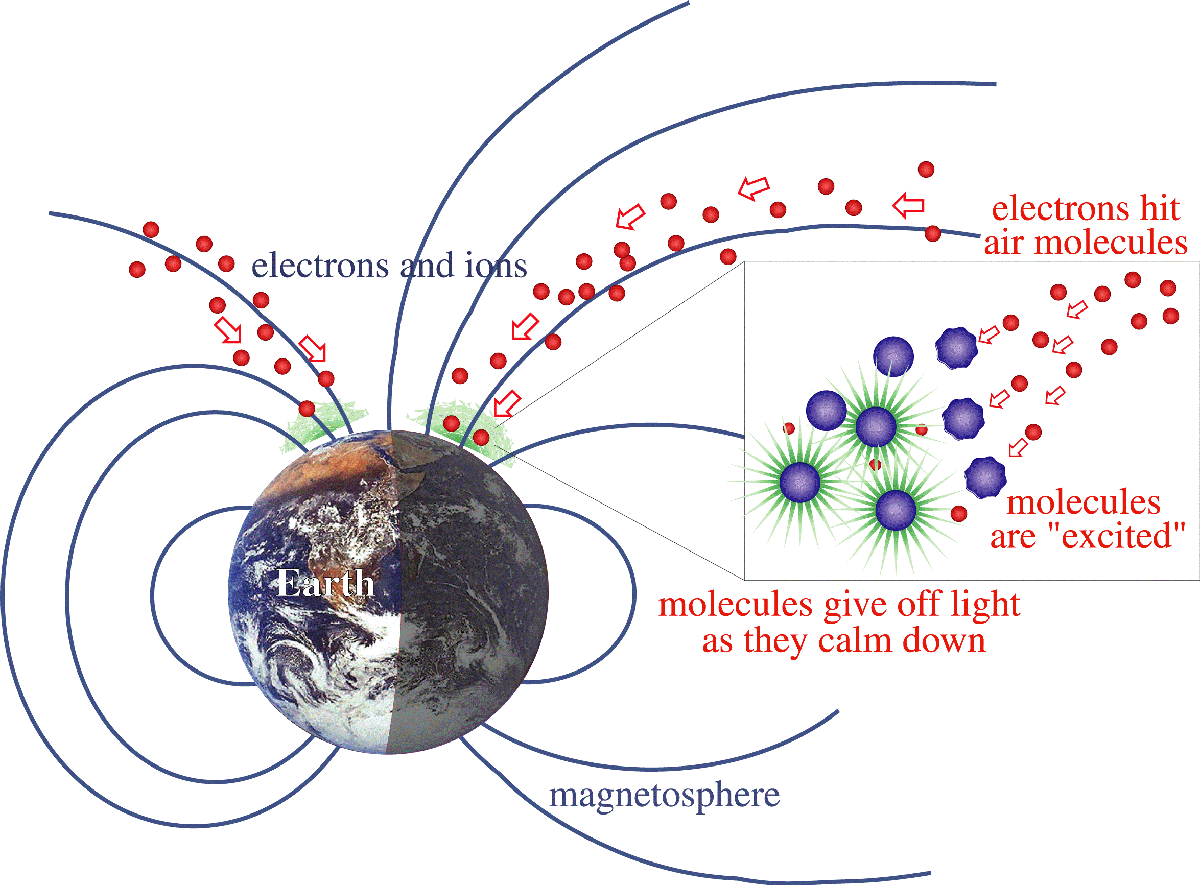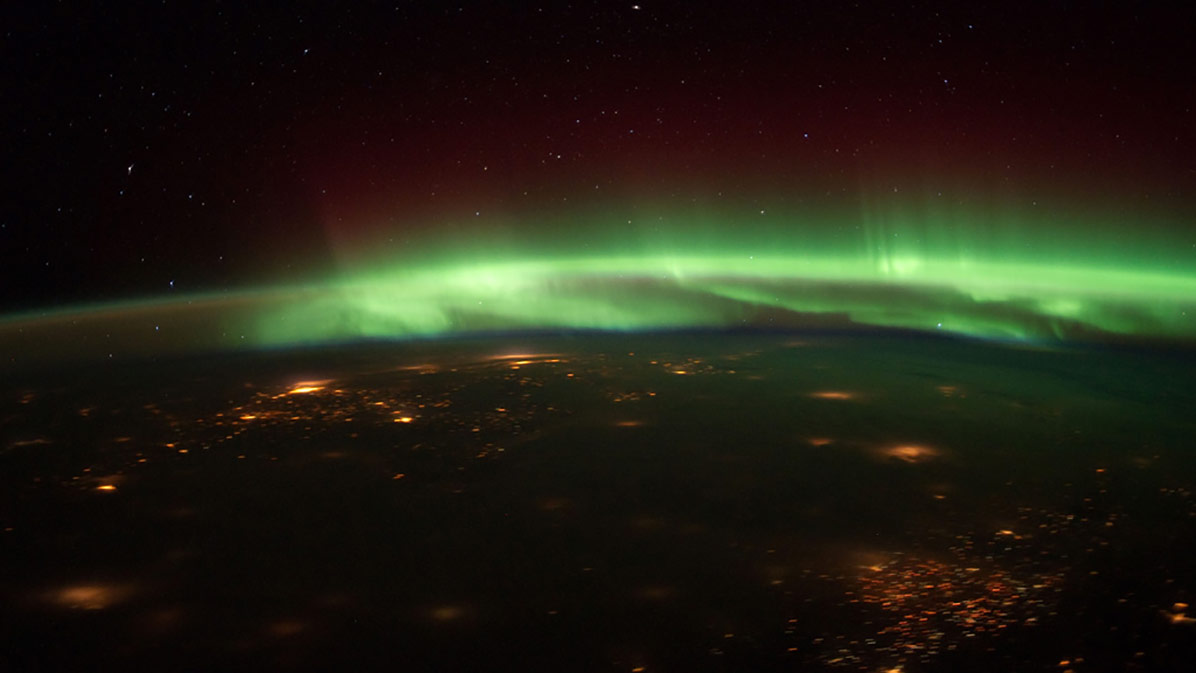Named for the Roman goddess of dawn, the aurora is a mysterious and unpredictable display of light in the night sky.
The aurora borealis and aurora australis – often called the northern lights and southern lights – are common occurrences at high northern and southern latitudes, less frequent at mid-latitudes, and seldom seen near the equator.
While usually a milky greenish color, auroras can also show red, blue, violet, pink, and white. These colors appear in a variety of continuously changing shapes. Sometimes the aurora is so dim and scattered as to be mistaken for clouds or the Milky Way; sometimes it is bright enough to read by.
May 10, 2024
Auroras are a spectacular sign that our planet is electrically connected to the Sun.
These light shows are provoked by energy from the Sun and fueled by electrically charged particles trapped in Earth’s magnetic field. While beautiful to behold, they can be a nuisance to those who depend on modern technology.
These light shows are provoked by energy from the Sun and fueled by electrically charged particles trapped in Earth’s magnetic field. While beautiful to behold, they can be a nuisance to those who depend on modern technology.

Auroras can appear as long, narrow arcs of light, often extending east to west from horizon to horizon.
At other times they stretch across the night sky in bands that kink, fold, and swirl, or even ruffle like curtains. They can spread out in multi-colored rays, like vertical shafts of light that stretch far up into space. And sometimes they engulf the sky in a thin cloud or veil. As aurora expert Robert Eather once wrote: “Like snowflakes, no two are ever quite the same.”
At other times they stretch across the night sky in bands that kink, fold, and swirl, or even ruffle like curtains. They can spread out in multi-colored rays, like vertical shafts of light that stretch far up into space. And sometimes they engulf the sky in a thin cloud or veil. As aurora expert Robert Eather once wrote: “Like snowflakes, no two are ever quite the same.”
Dramatically different auroras can appear in the course of a single night, and all of the forms can vary in intensity. The late evening auroras are usually long diffuse arcs, which slowly evolve into rayed arcs or bands that show increasing activity. As the night progresses, the bands and arcs become rippled and folded, eventually breaking into rays and — if the viewer is lucky — a corona. The corona is considered the most spectacular form of a rayed aurora, appearing overhead with all shafts converging to a center point. Patches–fluffy clouds of light–and flickering auroras are generally seen later in the night.
The “northern lights” (or “southern lights”) are caused by collisions between fast-moving particles (electrons) from space and the oxygen and nitrogen gas in our atmosphere.
These electrons originate in the magnetosphere, the region of space controlled by Earth’s magnetic field. As they rain into the atmosphere, the electrons impart energy to oxygen and nitrogen molecules, making them excited. When the molecules return to their normal state, they release photons, small bursts of energy in the form of light.

When billions of these collisions occur and enough photons are released, the oxygen and nitrogen in the atmosphere emit enough light for the eye to detect them. This ghostly glow can light up the night sky in a dance of colors. But since the aurora is much dimmer than sunlight, it cannot be seen from the ground in the daytime.
The color of the aurora depends on which gas is being excited by the electrons and on how much energy is being exchanged. Oxygen emits either a greenish-yellow light (the most familiar color of the aurora) or a red light; nitrogen generally gives off a blue light. The oxygen and nitrogen molecules also emit ultraviolet light, which can only be detected by special cameras on satellites.
MORE CREDITS:

Aurora are caused by energetic electrons and protons exciting atoms in Earth’s upper atmosphere.
Click on an image below to view larger.
CREDIT: Earth by Michael König
CREDIT: The Aurora from TSO Photography
CREDIT: RADIANCE from Lake Superior Photo
CREDIT: LYS:Ålesund from Stian Rekdal
CREDIT: New England Nights from Aaron Priest
CREDIT: Celestial Lights from Ole C. Salomonsen
CREDIT: In The Land Of The Northern Lights from Ole C. Salomonsen
CREDIT: Huelux from Randy Halverson
CREDIT: The Aurora from TSO Photography
CREDIT: Time-Lapse | Earth from Bruce W. Berry Jr
CREDIT: Aurora Borealis timelapse HD from Tor Even Mathisen
CREDIT: Arctic Motion from Tor Even Mathisen
